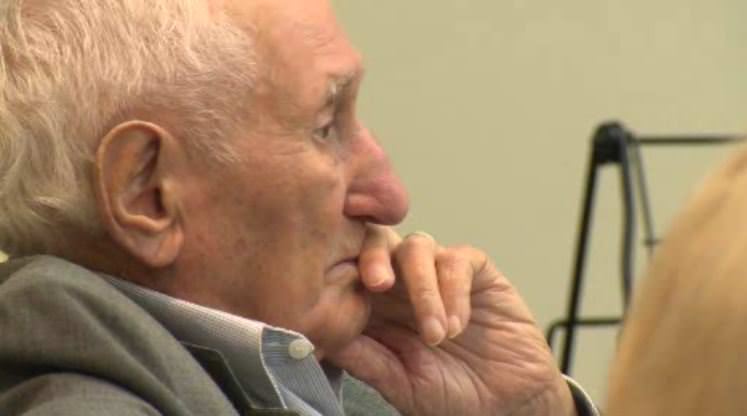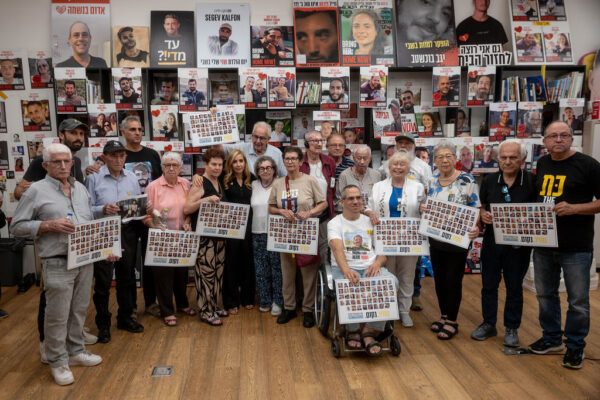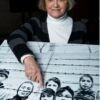
CBSMiami – Stacey Nowack teaches 7th graders at Weston’s Temple Dor Dorim about the Holocaust.
“Yes, 6 million were murdered, but what’s even more important is to understand what certain individuals went through during the Holocaust,” she told the class.
Nowack’s family was spared from the Holocaust’s atrocities, but teaching about it has become a calling.
“I just felt like it’s something I had to do, because what happens when the survivors are no longer here to tell their story? Somebody does have to do it,” she said.
She shows her students a short film about children of the Holocaust, kids around the same age as those in the classroom.
But in the corner, sits a special guest. An elderly man who doesn’t need to watch a movie – he lived it.
“What you have seen here, I went through,” he told the class.
Julius Eisenstein, who lives in Hallandale Beach, is one of almost 12,000 Holocaust survivors who now live in Florida.
He was almost 20 when the Nazis invaded his native Poland.
“My father had a bakery and a grocery store and one day a German came in with papers and said, ‘Get out of here right now,’ and we had to leave,” he recalled. “We only had whatever we had on ourselves. That’s what we were left with.”
Eisenstein, his parents, three sisters and all their Jewish friends and neighbors were imprisoned – at first in cramped, walled in villages known as the Jewish ghettos.
Loud speakers told them when to go inside, when to come out and when to walk single file.
“I am walking, and as I walked a little further, I am grabbed by a German Nazi, pulled by the neck and taken of off the line,” he said. “Now this is the last time that I saw my family.”
From the ghettos, they were put on trains – carted off like animals to concentration camps all over Eastern Europe.
The 7th graders could not have been prepared for what came next in Eisenstein’s story.
“When I came in to Auschwitz, they chased me out of the train. All I knew is I smelled the smell of dead bodies. And when I looked up, there were four huge chimneys,” he told them. “There was fire coming out, no smoke. They were burning the bodies. And that went on 24 hours a day, 7 days a week – never stopped.”
After his story, Nowack checked to make sure the kids were OK. She then told them that in hearing directly from Eisenstein, they are now all witnesses with a duty to share what they’ve learned.
“I think it’s just amazing that something this tragic and this big could have happened,” one student said. “And that people like Julius are still around to tell the story of what happened.”
“I’m not supposed to be here. But it looks like something – maybe up in the sky – made it so that I could talk and explain what happened to so many people,” Eisenstein said.
CBS4’s Rick Folbaum showed Eisenstein photos of some of the many items he’s donated to the permanent collection of the U.S. Holocaust Memorial Museum in Washington.
“This is a very interesting picture,” Eisenstein said.
it was a picture of his liberation from Dachau.
At 97 years old, Eisenstein is sadly one of a shrinking number of survivors still here to tell his story.
“I know when I go and when other holocaust people go, we will have somebody who will be able to take over and make sure that the world does not forget what happened to us,” he said. “For a normal person, it’s impossible to comprehend. The cruelty is beyond any explanation what they did.”
“I look at Julius. He has shared his story many times, but it’s only a very short portion of his story,” Nowack said. “And I often wonder – what has Julius seen? The tragedy. The hurt. The despair. We’ll never know.”
We can’t know it all, but we can know enough – enough to learn the lesson to never let it happen again.
Eisenstein ended his speech by showing the kids the one outward scar he still bares – the identification tattoo the Nazis carved into the forearms of all their victims.
Originally published HERE





